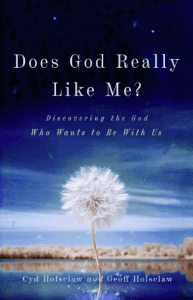 Joel Willitts, in his essay on empire criticism and the Gospel of Matthew, sets out a most incisive observation: “It appears that the fascination with Matthew and empire is a distinctively North American phenomenon, however.” He pushes harder: “I found no continental or British scholars who either have paid much notice to Carter’s [American’s foremost empire critic, esp when it comes to Matthew] work positively or negatively, or published independently on the topic” (84). Yet Willitts says he is “sympathetic to Carter’s interpretation” of Matthew because it avoids spiritualizing interpretations and lays focus on kingdom as a socio-political reality. The essay appears in Jesus is Lord, Caesar is Not, edited by S McKnight and J. Modica.
Joel Willitts, in his essay on empire criticism and the Gospel of Matthew, sets out a most incisive observation: “It appears that the fascination with Matthew and empire is a distinctively North American phenomenon, however.” He pushes harder: “I found no continental or British scholars who either have paid much notice to Carter’s [American’s foremost empire critic, esp when it comes to Matthew] work positively or negatively, or published independently on the topic” (84). Yet Willitts says he is “sympathetic to Carter’s interpretation” of Matthew because it avoids spiritualizing interpretations and lays focus on kingdom as a socio-political reality. The essay appears in Jesus is Lord, Caesar is Not, edited by S McKnight and J. Modica.
Do you think empire criticism reads too much into the text and not enough out of the text? Is there anything in Matthew that is overtly critical of Rome?
Matthew, he argues, had a more expansive empire of God in mind. In fact, he doesn’t think Matthew is “anti-imperial at all. Matthew’s problem with empire … was not empire per se, but which empire” (85). Matthew does not have in mind an empire-less kingdom but God’s empire.
For Carter, who is the focus for Willitts, Matthew is focused on the empire of Rome. Matthew, using the methods of archaeology, sociology, anthropology and postcolonial hermeneutics, is “resistant discourse” (88). Willitts wonders aloud if Carter is properly self-critical of his method, and he sees this at work in Carter: “Because Rome was big and bad, Matthew certainly addressed it” (88).
So where does Carter see anti-Roman resistant discourse at work? (1) the plot shows a resurrected Jesus who undoes the effects of the Roman authorities in crucifying Jesus; the focus is not the Jewish leaders but the Roman ones behind them. They are all Rome incarnate. (2) Christology: he manifests the sovereignty of God; these are features of imperial ideology turned inside out. Thus, Jesus is Lord, Caesar is not. (3) Eschatology: In the “eagle” image in Matt 24:28 (not “vultures”) we have an allusion to Rome’s dominant image. (4) Ecclesiology: the kingdom community of Jesus is an alternative to Rome’s community, in fact, it is countercultural.
Evaluation:
1. To see kingdom as having a politic is welcome; to recognize the pervasive presence of Rome is also welcome.
2. The method has substantively waned in significance. Postcolonial approaches, shaped for modern powers, are not as useful for a 1st Century context. More importantly there is deep ambivalence about Rome among Jews and Christians; it is not all negative, clearly. Also at times Carter overreaches in his exegesis of Matthew. Kingdoms of this world, for instance, is plural and not singular (only for Rome).
3. Willitts thinks Carter misses Matthew’s Davidic messianism. Matthew read a story in which the fulfillment is in an eschatological David. Matthew, in Carter’s view, can’t get out of his own way so he deconstructs him: Matthew appeals to empire to get rid of empire. But he fails to see Matthew’s empire is God’s, Israel’s, David’s empire now. Jesus is not the answer to Rome; Jesus is the answer to Israel’s story.











